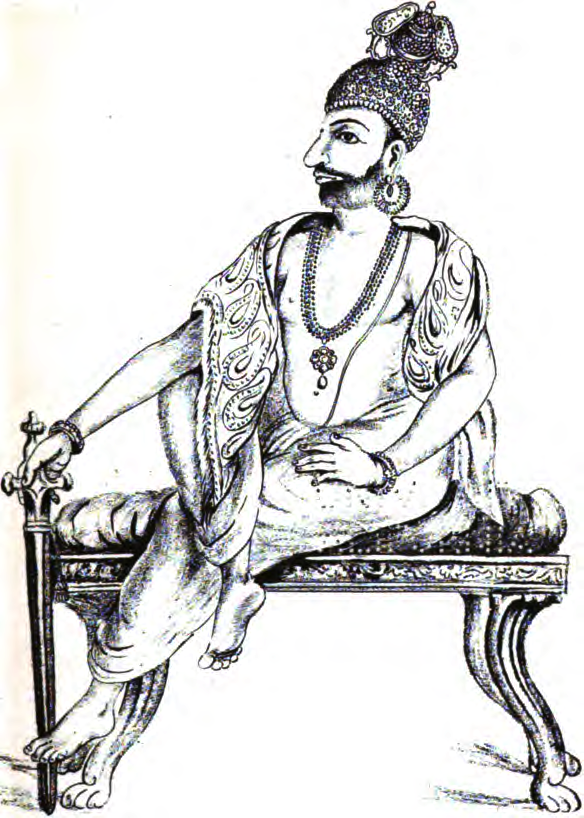|
Thrikkakara Temple
Thrikkakara Vamanamoorthy Temple (also referred as Thirukatkarai Vamanamoorthy ) is one of the few Hindu temples in India dedicated to Vamana, Lord Vamana/Vishnu. It is situated in Thrikkakara, Kochi in the States of India, state of Kerala, India. Located around 10 km north-east of the city center between Thrissur-Ernakulam highway (National Highway 47 (India), NH 47), Seaport-Airport Road, Cochin University of Science and Technology and Model Engineering College, it is a centre of celebrations and a place of origin for the popular Onam festival. The temple is around two millennia old and is also listed as one of the 108 Divya Desams (divine places). The main temple festival is during the Onam season, which falls on the month of August or September and is the most important event of the religious calendar here. The Onasadya or the Onam feast is held in a grand manner in the temple with people of various religions participating in it. After East India Company and Marthandavar ... [...More Info...] [...Related Items...] OR: [Wikipedia] [Google] [Baidu] |
India
India, officially the Republic of India (Hindi: ), is a country in South Asia. It is the seventh-largest country by area, the second-most populous country, and the most populous democracy in the world. Bounded by the Indian Ocean on the south, the Arabian Sea on the southwest, and the Bay of Bengal on the southeast, it shares land borders with Pakistan to the west; China, Nepal, and Bhutan to the north; and Bangladesh and Myanmar to the east. In the Indian Ocean, India is in the vicinity of Sri Lanka and the Maldives; its Andaman and Nicobar Islands share a maritime border with Thailand, Myanmar, and Indonesia. Modern humans arrived on the Indian subcontinent from Africa no later than 55,000 years ago., "Y-Chromosome and Mt-DNA data support the colonization of South Asia by modern humans originating in Africa. ... Coalescence dates for most non-European populations average to between 73–55 ka.", "Modern human beings—''Homo sapiens''—originated in Africa. Then, int ... [...More Info...] [...Related Items...] OR: [Wikipedia] [Google] [Baidu] |
Onasadya
Sadya ( ml, സദ്യ) is a meal of Kerala origin and of importance to all Malayalis, consisting of a variety of traditional vegetarian dishes usually served on a banana leaf in Kerala as lunch. Sadya means banquet in Malayalam. Sadya is typically served as a traditional feast for Onam, the state festival of Kerala and Vishu. Overview A typical Sadya can have about 24–28 dishes served as a single course. In cases where it is a much larger one it can have over 64 or more items, such as the Sadya for Aranmula Boatrace (Valla Sadya). During a traditional Sadya celebration, people are seated cross-legged on mats. Food is eaten with the right hand, without cutlery. The fingers are cupped to form a ladle. The main dish is plain boiled rice, served along with other curries, ''Koottaan'' (കൂട്ടാന്) which include curries like parippu, sambar, rasam, and others like , , , , , , , , mango pickle, injipuli, mezhukkupuratti, , as well as papadam, plantain chi ... [...More Info...] [...Related Items...] OR: [Wikipedia] [Google] [Baidu] |
Shasta (deity)
Shasta (IAST Śāstā) is a Hindu deity of Dravidian origin, usually associated with Shiva and Vishnu. In Hindu mythology, Shasta is considered to be another name of Ayyappan, described as the offspring of Shiva and Mohini. His principal function is to act as a kuladevata of a given clan, as well as act as a guardian of a village's boundaries. In South India, he is identified with the Ayyanar in Tamil Nadu and the Ayyappan in Kerala. Significance ''Shasta'' is a generic term that means "Teacher, Guide, Lord, Ruler" in Sanskrit. In South India, a number of deities are associated with Shasta. The Tamil song ''Shasta Varavu'' states that there are eight important incarnations and forms of Shasta. This is also present in the agamic work ''Dyana Ratnavali''. The ''Ashta-Shasta'' (eight Shastas) are ''Aadhi Maha Shasta'', ''Dharma Shasta'' (Ayyappan), ''Gnana Shasta'', ''Kalyana Varadha Shasta'', ''Sammohana Shasta'', ''Santhana Prapti Shasta'', ''Veda Shasta'' and ''Veera Shas ... [...More Info...] [...Related Items...] OR: [Wikipedia] [Google] [Baidu] |
Bhagavati
Bhagavatī (Devanagari: भगवती, IAST: Bhagavatī), is a Hindus, Hindu epithet of Sanskrit origin, used as an honorific title for female deities in Hinduism. It is primarily used to address one of the Tridevi: Saraswati, Lakshmi, and Parvati. The male equivalent of Bhagavatī is Bhagavān.Sarah Caldwell (1998), Bhagavati, in Devi: Goddesses of India (Editors: John Stratton Hawley, Donna Marie Wulff), Motilal Banarsidass, , pages 195-198 The term is an equivalent of Devi and Ishvari. Bhagavati Temples India Bhagavati temples can also be found all over Mumbai, for example, * Bhagavati Devi Sansthan Deosari, Umarkhed, Yavatmal District, Maharashtra. * Bhagavati temple at Ratnagiri, Maharashtra. * Bhagawati Temple at Reotipur, Uttar Pradesh. * Bhagawati Temple at Mirzapur, Uttar Pradesh. Karnataka Bagavathi temple Sasihitlu Mangalore. Famous temple in Karnataka on the bank of Arabian sea. Guliga is the main Daiva here. Bhagavathi temple in Ullal, Mangalore Kerala Sh ... [...More Info...] [...Related Items...] OR: [Wikipedia] [Google] [Baidu] |
Common Era
Common Era (CE) and Before the Common Era (BCE) are year notations for the Gregorian calendar (and its predecessor, the Julian calendar), the world's most widely used calendar era. Common Era and Before the Common Era are alternatives to the original Anno Domini (AD) and Before Christ (BC) notations used for the same calendar era. The two notation systems are numerically equivalent: " CE" and "AD " each describe the current year; "400 BCE" and "400 BC" are the same year. The expression traces back to 1615, when it first appeared in a book by Johannes Kepler as the la, annus aerae nostrae vulgaris (), and to 1635 in English as " Vulgar Era". The term "Common Era" can be found in English as early as 1708, and became more widely used in the mid-19th century by Jewish religious scholars. Since the later 20th century, BCE and CE have become popular in academic and scientific publications because BCE and CE are religiously neutral terms. They are used by others who wish to be sensit ... [...More Info...] [...Related Items...] OR: [Wikipedia] [Google] [Baidu] |
Parasurama
Parashurama (), also referred to as Rama Jamadagnya, Rama Bhargava and Veerarama, is the sixth avatar among the Dashavatara of the preserver god Vishnu in Hinduism. He is believed to be one of the ''Chiranjivi, Chiranjeevis'' (Immortals), who will appear at the end of the ''Kali Yuga'' to be the guru of Vishnu's tenth and last incarnation, Kalki. Born to Jamadagni and Renuka, the Brahmin Parashurama was foretold to appear at a time when overwhelming evil prevailed on the earth. The Kshatriya class, with weapons and power, had begun to abuse their power, take what belonged to others by force and tyrannise people. He corrected the cosmic equilibrium by destroying the Kshatriya warriors twenty-one times. He is married to Dharani, an incarnation of Lakshmi, the wife of Vishnu. He is present in the Ramayana due to the conflict with Rama (the protagonist of the Ramayana) over Shiva's broken bow. He is mentioned in the Mahabharata as the guru of Bhisma, Drona, Rukmi, and Karna. ... [...More Info...] [...Related Items...] OR: [Wikipedia] [Google] [Baidu] |
Saraswati Puja
Vasant Panchami, also called Saraswati Puja in honor of the Hindu goddess Saraswati, is a festival that marks the preparation for the arrival of spring. The festival is celebrated in Indian religions in different ways depending on the region. Vasant Panchami also marks the start of preparation for Holika and Holi, which take place forty days later. The Vasant Utsava (festival) on Panchami is celebrated forty days before spring, because any season's transition period is 40 days, and after that, the season comes into full bloom. Nomenclature and date Vasant Panchami is celebrated every year on the fifth day of the bright half of the Hindu lunisolar calendar month of Magha, which typically falls in late January or February. Spring is known as the "King of all Seasons", so the festival commences forty days in advance. It is generally winter-like in northern India, and more spring-like in central and western parts of India on Vasant Panchami, which gives credence to the idea tha ... [...More Info...] [...Related Items...] OR: [Wikipedia] [Google] [Baidu] |
Navarathri
Navaratri is an annual Hindu festival observed in the honour of the goddess Durga. It spans over nine nights (and ten days), first in the month of Chaitra (March/April of the Gregorian calendar), and again in the month of Sharada. It is observed for different reasons and celebrated differently in various parts of the Hindu Indian cultural sphere. Theoretically, there are four seasonal ''Navaratri''. However, in practice, it is the post-monsoon autumn festival called Sharada Navaratri. The festival is celebrated in the bright half of the Hindu calendar month Ashvin, which typically falls in the Gregorian months of September and October. Etymology and nomenclature The word ''Navaratri'' means 'nine nights' in Sanskrit, ''nava'' meaning nine and ''ratri'' meaning nights. Dates and celebrations In the eastern and northeastern states of India, the Durga Puja is synonymous with ''Navaratri'', wherein goddess Durga battles and emerges victorious over the buffalo demon Mahishasu ... [...More Info...] [...Related Items...] OR: [Wikipedia] [Google] [Baidu] |
Makara Sankranti
Makar(a) Sankranti (), also referred to as Uttarayana, Maghi, or simply Sankranti, is a Hindu observance and a festival. Usually falling on the date of January 14 annually, this occasion marks the transition of the Sun from the zodiac of Sagittarius (''dhanu'') to Capricorn (''makara''). Since the Sun is regarded to have moved from the southern hemisphere to the northern hemisphere on this day in the Hindu calendar, the festival is dedicated to the solar deity, Surya, and is observed to mark a new beginning. Many native multi-day festivals are organised on this occasion all over India. The festivities associated with Makar Sankranti are known by various names ''Magh Bihu'' in Assam, ''Maghi'' in Punjab, ''Maghi Saaji'' in Himachal Pradesh, ''Maghi Sangrand'' or ''Uttarain'' (Uttarayana) in Jammu, ''Sakrat'' in Haryana, Sakraat in Rajasthan, ''Sukarat'' in central India, ''Pongal'' in Tamil Nadu, ''Uttarayana'' in Gujarat, and Uttar Pradesh, ''Ghughuti'' in Uttarakhand, ''Da ... [...More Info...] [...Related Items...] OR: [Wikipedia] [Google] [Baidu] |
Vishu
Vishu (Malayalam: വിഷു), the traditional Malayali New Year, is a Hindu festival celebrated in the Indian state of Kerala, Tulu Nadu region of Karnataka, and Mahe district. The festival marks the first day of Medam, the first month of the Malayalam Calendar followed in Kerala.Major festivals of Kerala Government of Kerala (2016) It therefore always falls in the middle of April in the on 14 or 15 April every year. The festival is marked by family time, preparing colourful auspicious items and viewing these as the first thing on the Vishu day (Vishukkani). In particular, Malayalis seek to view the golden blossoms of the [...More Info...] [...Related Items...] OR: [Wikipedia] [Google] [Baidu] |
Maharaja Of Travancore
The Maharaja of Travancore was the principal title of the ruler of the Kingdom of Travancore in the southern part of Kerala, India. The Maharaja of Travancore was the topmost ruler of Travancore until 1949, when Travancore was annexed into India. Since then, the Maharaja of Travancore remains as a titular position. Maharajas of the Kingdom of Travancore Titular Maharaja After British India became independent as two dominions in 1947, Chithira Thirunal agreed to accede his state to the new Dominion of India. Travancore was united with the neighbouring Cochin state and Chithira Thirunal served as Rajpramukh of the Travancore-Cochin Union from 1 July 1949 to 31 October 1956, which was the entire duration of the existence of that political entity. On 1 November 1956, the state of Kerala was created by uniting the Malayalam-speaking areas of the Travancore-Cochin Union with those of neighbouring Madras State, and Sree Chithira Thirunal's office of Rajpramukh came to an end. On 28 ... [...More Info...] [...Related Items...] OR: [Wikipedia] [Google] [Baidu] |





_(8638392628).jpg)



